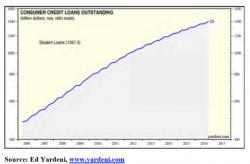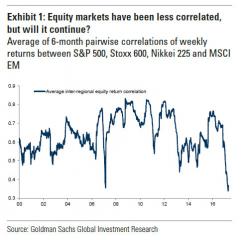Three Fast Facts About Slow Markets
From Nicholas Colas of Convergex
Today we continue our recent exploration of the ongoing low volatility in US equity markets, but with a novel twist. Instead of looking at the CBOE VIX Index, we look at the historical trends in actual S&P 500 price volatility. Not only is the dataset longer here (starting in the 1950s rather than 1990), but it is also “Stickier” than the twitchy VIX.
Three takeaways.


